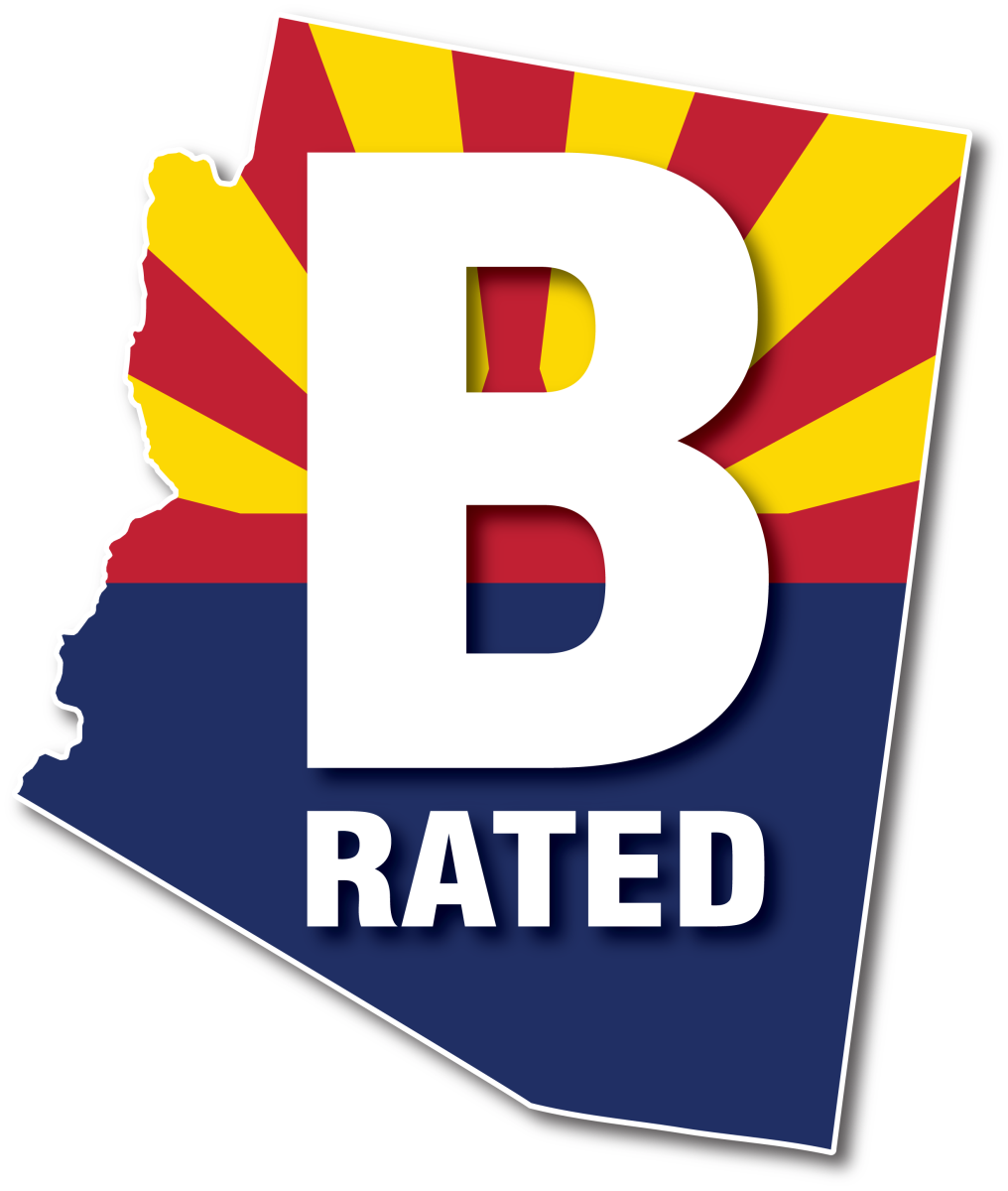Letter Grade
State Accountability
Updated: 11/1/23
 We are proud to announce that Pueblo High School has been rated as a “B” School for 2022-23! Congratulations to our outstanding faculty, staff, students & families for making this happen! ¡Sí Se Puede!
We are proud to announce that Pueblo High School has been rated as a “B” School for 2022-23! Congratulations to our outstanding faculty, staff, students & families for making this happen! ¡Sí Se Puede!
The Arizona Department of Education is required by Arizona Revised Statutes § 15-241 to develop an annual achievement profile for every public school in the state based on an A through F scale.
Why does Arizona have an A-F system of grading schools?
Federal and state law require it. The federal Every Student Succeeds Act (ESSA) requires states to measure school performance using valid, reliable and comparable information across all schools. State law mandates the A-F letter grade system, which is based on a range of quantitative measures including the statewide assessment.
What is the timeline for A-F Letter Grades?
According to Arizona State Statute, A-F Letter Grades must be released by November 1st following the school year they represent.
What does each letter grade mean?
A (excellent): Distinguished performance on the statewide assessment, significant student growth, high four-year graduation rates, students on track to proficiency; overall performance is significantly higher than state average.
B (highly performing): High performance on statewide assessment and/or significant student growth and/or higher four-year graduation rates and/or moving students to proficiency at a higher rate than the state average.
C (performing): Adequate performance but needs improvement on some indicators, such as proficiency, growth or graduation rate.
D (minimally performing): Inadequate performance in proficiency, growth and/or four-year graduation rate relative to the state average.
F (failing): Systematic failures in proficiency, growth and graduation rates (below 67%); performance is in bottom 5% of the state.
How are the grades assigned?
Assessment, growth scores and other measures are compiled and submitted to the Arizona Department of Education. The State Board of Education sets “cut scores,” which are the number of points required to earn an A, B, C or D. The Department then calculates the letter grades using the cut scores and the data submitted by schools.
What do the grades measure?
Five quantifiable factors go into the grades.
 We are proud to announce that Pueblo High School has been rated as a “B” School for 2022-23! Congratulations to our outstanding faculty, staff, students & families for making this happen! ¡Sí Se Puede!
We are proud to announce that Pueblo High School has been rated as a “B” School for 2022-23! Congratulations to our outstanding faculty, staff, students & families for making this happen! ¡Sí Se Puede!The Arizona Department of Education is required by Arizona Revised Statutes § 15-241 to develop an annual achievement profile for every public school in the state based on an A through F scale.
Why does Arizona have an A-F system of grading schools?
Federal and state law require it. The federal Every Student Succeeds Act (ESSA) requires states to measure school performance using valid, reliable and comparable information across all schools. State law mandates the A-F letter grade system, which is based on a range of quantitative measures including the statewide assessment.
What is the timeline for A-F Letter Grades?
According to Arizona State Statute, A-F Letter Grades must be released by November 1st following the school year they represent.
What does each letter grade mean?
A (excellent): Distinguished performance on the statewide assessment, significant student growth, high four-year graduation rates, students on track to proficiency; overall performance is significantly higher than state average.
B (highly performing): High performance on statewide assessment and/or significant student growth and/or higher four-year graduation rates and/or moving students to proficiency at a higher rate than the state average.
C (performing): Adequate performance but needs improvement on some indicators, such as proficiency, growth or graduation rate.
D (minimally performing): Inadequate performance in proficiency, growth and/or four-year graduation rate relative to the state average.
F (failing): Systematic failures in proficiency, growth and graduation rates (below 67%); performance is in bottom 5% of the state.
How are the grades assigned?
Assessment, growth scores and other measures are compiled and submitted to the Arizona Department of Education. The State Board of Education sets “cut scores,” which are the number of points required to earn an A, B, C or D. The Department then calculates the letter grades using the cut scores and the data submitted by schools.
What do the grades measure?
Five quantifiable factors go into the grades.
- Student growth from year to year, or, for high-performing students, maintenance of top achievement. Individual students are compared year to year, rather than comparing one class to the previous year’s class. For elementary schools, growth accounts for 50% of a school’s grade. For high schools, subgroup improvement (more information in the question below) accounts for 20% of a school’s letter grade.
- Proficiency on the statewide assessment, AASA or ACT.
- English language proficiency and growth (as measured by AZELLA).
- Indicators measuring if an elementary student is ready for success in high school and high school students are ready for success in post-secondary settings.
- High school graduation rates.

